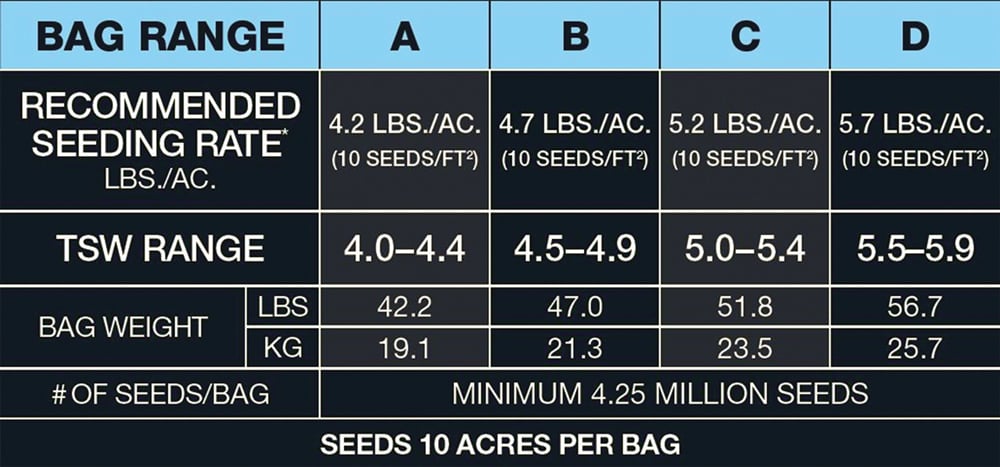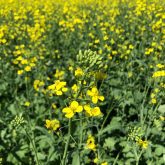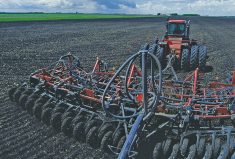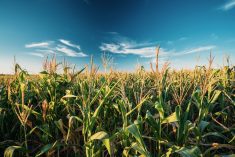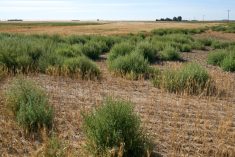The message is clear: If you’re still using bushels or pounds per acre as your seeding measure, you may not only be losing yield but spending more on seed than necessary.
More and more producers are adopting thousand seed weight (TSW) as their primary seeding measurement. TSW is a more precise gauge of seed size variation, helping producers plan and achieve plant stands with greater accuracy and limiting surprise in-season seed purchases, said an agrologist with Alberta Agriculture and Forestry.
“Where there is significant variation in seed size between one variety and another, bushels per acre is a poor seeding tool to use,” said Harry Brook.
Read Also

Farming Smarter receives financial boost from Alberta government for potato research
Farming Smarter near Lethbridge got a boost to its research equipment, thanks to the Alberta government’s increase in funding for research associations.
With peas, for example, there can be as much as 75 per cent seed size variation.
“That can have a big impact on plants per square foot.”
TSW has become the standard measurement for most crops, said Brook. This was recently highlighted by BASF’s decision to sell (beginning this fall) InVigor canola seed in bags marked with recommended thousand seed weight. The idea is to help producers achieve an optimal stand of five to seven plants per square foot.
“We feel the value of InVigor RATE seed count-based packaging for growers is that the number of seeds per bag will always be consistent, regardless of TSW,” said Wade Stocker, InVigor canola seeds and traits manager with BASF.
“It also means a bag always seeds 10 acres when using the recommended seeding rates, which should result in growers purchasing only what they need for their acres and not having to scramble in-season to buy more or do returns,” said Stocker. “This makes their costs transparent and known at the beginning of the season based on their acres, with no surprises due to TSW variability.”
Of course, targeting a specific plant stand is one thing — ensuring a crop grows to that standard is another. Stocker recommends producers follow up seeding, herbicide application, and harvest with plant counts per square foot.
“It may not be something you need to do every year, but perhaps try it for a season or two just to confirm whether you are within the desired plant count range with your growing season conditions, seeding equipment, and seeding rate.”
A plant stand recipe
Seed size variance is one of the biggest obstacles growers face when attempting to achieve an ideal plant stand, said Stocker.
“Today, all canola is packaged into 22.7-kilogram, or 50-pound, bags which contain considerable variability in the number of seeds depending on the TSW of the seed lot.
“The result is increased complexity for the grower to target a plant population, as many have not been adjusting their seeding rate to account for seed size variance.”
Research that started in 2013 — when Bayer still owned the InVigor line — consistently showed five to seven plants per square foot as the optimal target population for that line of canola varieties, he said.
“That same research determined that to achieve this plant stand, growers needed to seed 10 seeds per square foot due to the average survivability of seeds falling in the 50 to 70 per cent range.”
What BASF needed was a way to communicate to growers how to achieve that optimal plant stand. The answer was to print the measurements right on the bag, just like a recipe. BASF calls this “InVigor RATE.”
“InVigor seed will be packaged into bags featuring four different TSW ranges with corresponding recommended seeding rates for planting 10 acres per bag to achieve the optimal plant population,” said Stocker. “All bags will contain the same basic number of seeds regardless of the range or TSW.”
The four seed ranges are divided into A, B, C and D — with A representing the smallest seeds and D the largest. The labels will show the TSW (also known as thousand kernel weight or TKW) and recommended seeding rates for each range.
Assuming a 60 per cent seed mortality, the recommended seeding rate for InVigor is 4.2 pounds per acre for A-bag varieties (four to 4.4 grams per TSW); 4.7 pounds per acre for B-bag varieties (4.5 to 4.9 grams per TSW); 5.2 pounds per acre for C-bag varieties (five to 5.4 grams per TSW) and 5.7 pounds per acre for D-bag varieties (5.5 to 5.9 grams per TSW).
How to find your TSW
But what if the bag of seed you’re using doesn’t have the recommended TSW written on it? There are a few ways to discover your thousand seed weight. One is to use an online seeding rate calculator. Another is a seed test conducted by an accredited seed test lab.
“If all else fails, count out 1,000 seeds and weigh them on a postage scale,” said Brook. “In canola, it could be done easily by using the 100-seed, green seed testing grid and then weighing it.
“As long as you have the thousand kernel weights and germination rate, you can easily calculate the seeding rate required to get the desired plant population.”


